Deciding what to buy for a newborn baby is quite a difficult task, especially for the parents of the newborn themselves.
Most times, you’re stuck on what to buy when you come home from the hospital.
For example, you’ll need to select baby clothes, sterilizer for a milk bottle, which formula to use, diaper changing table, and so many other things.
But the most important thing is, Where Should a Newborn Sleep? With me in the same room or another room? Which one is safer and suitable for baby health.
After deciding where he/she would sleep, the next thing is, “what kind of arrangement do we need for safe sleeping?”
Do I need a bassinet for that? Are bassinets safe for a newborn? Can a baby sleep in Bassinet?
The answers to all your queries and more will be explained in this article with proof so that you can make valuable decisions for your infant after reading this article.
So, let’s dive into it.
Do I Need a Bassinet for My Newborn Baby?
Yes, you need a Bassinet for your newborn baby. Both are safe and highly recommended by the American Academy of Pediatrics, popularly referred to as CDC. The design of both Bassinet and Crib is different. However, the choice would purely depend upon the feature you want for your baby
Let’s check out what some authority sites are saying, and why do you need a bassinet?
I got several suggestions and advice from family and friends the first day when I came back home with my little angel.
Some suggested that I sleep in the same place as the baby because there is a lot of Benefits of doing Co-Sleeping with baby.
Others suggested that I let the baby sleep in his room. Surely, different people have different opinions.
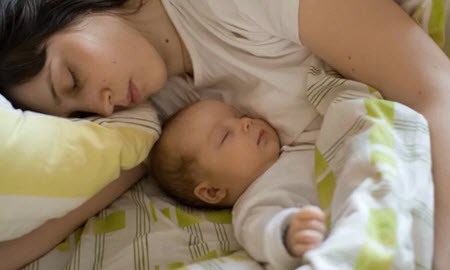
So, the first day, I slept with my infant in the same room on the same bed. But, the next day, when I read a paper on “ELSEVIER” about the SIDS risk factors, I got really shocked.
I realized that I had put my baby at high risk. Here is what written in the paper:
Approximately half (30%) of all sudden and infant deaths in the United States occur when an infant is sharing a sleeping surface with someone unexpected else; the factors associated with bed-sharing are also associated with SIDS.
It was a very embarrassing moment for me because I put my baby on risk. But I was not familiar with it. I did it by mistake. However, I’ve decided to ensure that you do not make the same mistake as I did.
Now, the first question that often comes to mind is, “Where will my baby sleep safely, if he is not safe with me?”
After several research, I got the Answer to my question from the American Academy of Pediatrics (AAP). Check what they said.
San Francisco, CA—Infants should sleep in the same bedroom as their parents–but on a separate surface, such as a crib or Bassinet, and never on a couch, armchair or a soft surface—to decrease the risks of sleep-related deaths, according to a new policy statement released by the AAP.
So, now it’s clear! The best place for baby to sleep is in a Bassinet or Crib. But which one among the two is the best and the most comfortable for the baby?
Note:- If Bassinet and Crib are the best places, that does not mean co-sleeping is unsafe. After all, humans have been co-sleeping with babies from ancient times so that you can do it.
However, you’ll have to take care of a few things to ensure safe co-sleeping.
Planning to buy newborn essentials? Then don’t forget to create Create Amazon Baby Registry and get a 10% discount on all baby essential along with $35 worth free welcome box.
Here is a step by step guide to find baby registry on Amazon.
I hope now you have the Answer to your question, “do you need a bassinet for a newborn?“.
Let’s explore further by checking out why you need a bassinet; is Bassinet really necessary? Is Bassinet safe? And some other important questions to make your decision more valuable.
1.) Are Bassinets Safe For Newborn Baby?
Yes! Bassinets are safe for newborn babies. All the bassinet manufacturers follow the guidelines that are provided by Consumerreports.org and Consumer Product Safety Commission to design bassinets that will create a safe and healthy sleeping environment for babies.
If it does not meet the guidelines, then Consumerreports ban the product, and manufacturers have to recall it for baby safety.
Due to its small nature, the next question that comes in my mind is, How long can I use it?
It is essential to know because I’m going to invest money in it. Check out this video by IntermountainHealthcare.org.
I hope you now have an idea of how long you can use it.
There is no hard and fast rule of how many months you can use the Bassinet. So, always monitor and check that the baby is comfortable in it and doesn’t roll over.
If you still need help with this topic, feel free to check these articles.
- How Long Can a Baby Sleep In a Bassinet?
- At What Age Should a Baby Stop Sleeping In a Bassinet?
- How To Get Newborn To Sleep in Bassinet?
Whether it’s to feed your baby or to change the diaper in the middle of the night, a bassinet is much more convenient and safer than the Crib.
For example, keeping the baby right next to the bed significantly reduces the chances of an accident that may occur at night.
You don’t have to stumble through the dark to feed him in the middle of the night.
You can buy a bassinet that you can attach or place near your bed (co-called bedside sleeper) to keep baby near you, for easy breastfeeding at night.
Or you can buy bed-sharing Bassinet to do safe co-sleeping.
The sides of a bassinet are a lot shorter, making it easier to pick your baby up and put him back down without much effort.
2.) Cosy & Comfortable Place To Sleep:
Over the last nine months, your baby enjoyed the shelter of their mother’s womb, but now they have found themselves in a different environment.
To give them approximately the same cozy feel of the womb for comfortable sleep, the Bassinet comes very useful.
A small-sized Bassinet provides a feeling of being cocooned, and that will help your baby fall asleep a lot faster.
Unlike a giant crib, your little angel won’t feel isolated and uncomfortable in a bassinet.
Plus, there are many accessories to choose to make Bassinet even more comfortable.
It’s really heart-warming to see your baby fast asleep, snug, and cozy.
A bassinet will provide your little one with the complete coziness and comfort that they need for a sound sleep.
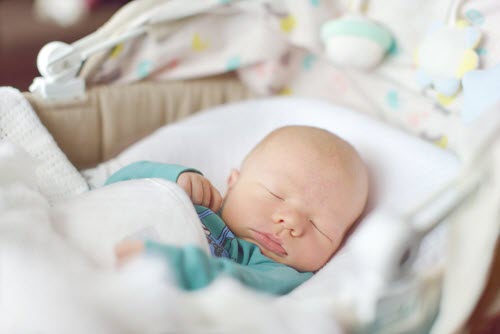
So what could be better than having your baby snug in a bassinet next to you all night?
If your baby is born before the due date or preemies baby, then having a preemies bassinet is really beneficial for your baby’s health.
On the other hand, if you delivered through a C-Section, then you need something that helps you as well as the infant. In that, you can do with Halo Bassinest Swivel Sleeper, that has all the features that you need.
Now, let me know, What do you need for a newborn baby? A bassinet or Crib.
3.) Help To Soothe Baby:
The majority of the bassinets in the market come with some kinds of unique feature that helps your baby to sleep faster.
For example, Fisher-Price Soothing Motions Bassinet, One of the best baby bassinet that comes with vibrating device and Music to lull your baby.
Check out this Product feature video.
But again, the question is, “Is music good for babies?”
Well, the answer is YES. Music is not just useful to soothe babies; it also improves brain processing. A study conducted by the scientists at the University of Washington’s Institute for Learning & Brain Sciences (I-LABS) found that the brain of 9-month-old baby improved because it processed both music and new speech sounds.
Don’t worry about the safety of the baby. The vibrating Bassinet is totally safe and trending now! Check this “Is vibrating Bassinet safe? “to get answers to common FAQS.
Like, Can I use vibration full night, Can a baby sleep on a vibrating surface, etc.
Check out this 5 Top rated bassinet with vibration and Music, in case you love to buy that Bassinet. You can also buy some kinds of extension to add this feature in Crib too, but having an inbuilt feature has its advantage.
I believe the point will really add some value to your question, do I need a bassinet?
4.) Portable & Consume Less Space:
Parents living in small size apartments, generally prefer bassinets over cribs because bassinets come in a smaller size and easily fit into small spaces.
You can quickly assemble and disassemble the Bassinet within a minute to store it somewhere for your next baby. Also, this makes it travel-friendly.
Fold it, pack it, and go with it due to its lightweight frame. Even some bassinets come with travel-bag that offers parents a hassle-free traveling.
It also comes handier when you travel because the baby loves to sleep in it. So having a travel bassinet with you is life-saving.
Now, think about traveling with a crib that’s made up of wood.
Some bassinets come with wheels that allow parents to move it around the house conveniently, but in the Crib, it is not possible to move because of its heavyweight.
Here are some options for you.
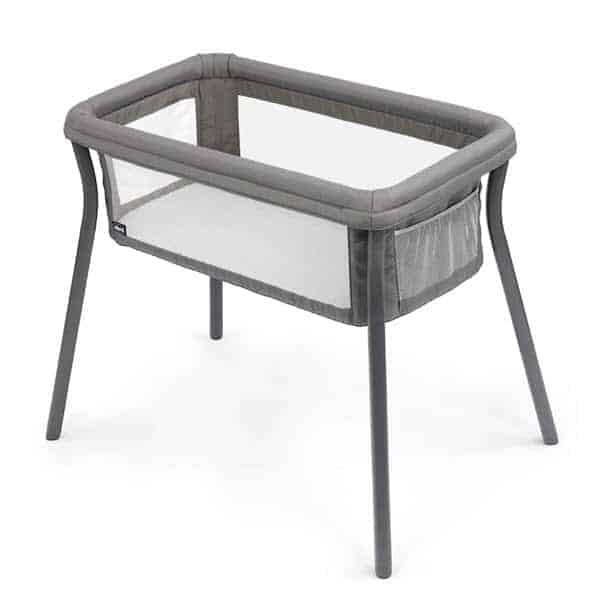
You can’t use the Bassinet as a car seat because the Bassinet is not designed to provide safety in the car.
Also, the car seat is not intended for babies to sleep in for a long time. Both are different. Check this informative article: Is a Car Seat or Bassinet Better for Newborn Baby?
5.) Protection From Light & Bugs:
Providing a cozy, safe place for your baby is not enough. You have to protect your baby from direct sunlight or bulb light, dust, and, especially, pets.
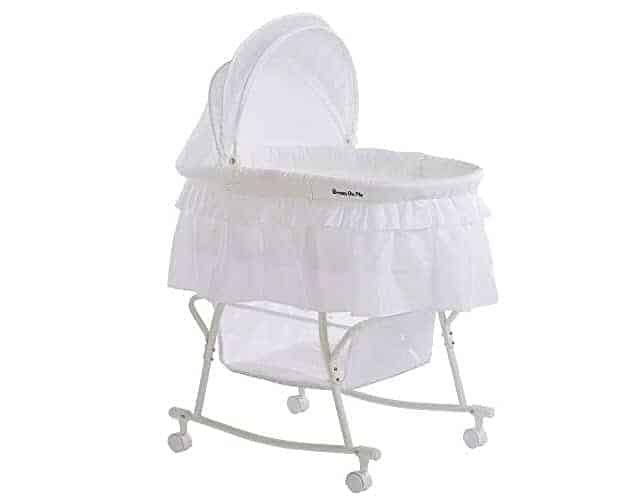
Although nowadays, pets are treated like members of the family, parents can struggle with keeping them out of the Bassinet
Or even out of the room, where the baby sleeps.
Equipping your Bassinet with a hood or a canopy can eliminate unwanted light and dust as well as surprise visits from pets,
So that your baby can enjoy uninterrupted sleep.
I firmly believe that every baby has the right to a pleasant slumber, whether in the day or at night.
I hope you like our useful and informative “Do I Need a Bassinet for My Newborn Baby” that helps you to make a valuable decision in the future.
Some FAQs
Let check some most frequently asked questions by a mom like you.
1.) Can You Put a Mobile On a Bassinet?
Well, It depends on how you are going to sue it. The pediatrician doesn’t recommend to add or place anything in the bassinet/crib made of softs material. That can cause suffocation or leads to SIDS risk.
But you can place toy over/hang on the Bassinet to keep baby busy. Having a toy over the Bassinet helps brain development and motor skills. Checkout this list of the best mobile for bassinet.
2.) Are Bassinets With Cloth Sides Safe?
The Answer is NO. Bassinets with cloth sides are not safe, because it raises the temperature in the Bassinet or causes suffocation and higher the risk of SIDS. So,
Bassinet that has Mesh Side is preferable for better airflow for breathability and visibility to see the baby from far away.
3.) How Many Bassinets Do I Need?
You don’t need to buy more than one Bassinet (but its purely your choice). One Bassinet is sufficient to take care of your baby up to 6-8 months. It depends on the manufacturer’s recommendation.
However, it is recommended that you buy two sets of mattresses and 2-3 sets of the fitted sheet. It helps to keep your baby clean.
4.) How Much Does a Baby Bassinet Cost?
The cost of the bassinet is depended upon the features you want for your baby. You can easily found a lot of good functionality bassinet under $50 in the market whereas some people want to go with a luxury bassinet or want modern features bassinet.
Word of Advice
We know that every family has its own needs and requirements.
In this article, we just evaluated the issues that you can resolve through buying a bassinet. If you need help to make a better decision, read this article: How to choose a bassinet?
However, the final decision is yours. No one knows your situation better than you. But if you are still confused whether you need a bassinet or Is Bassinet necessary?
Yes. To provide a safe and comfortable sleep to your newborn baby, a bassinet is needed, and it’s also safe. Bassinets have all the features like Music, a nightlight, vibration, lullabies, and all other things you need to provide comfort, and great sleep.
Have a look at this top-rated best baby bassinet design to resolve your problem.
Now, it’s your turn. Let us know in the comments section: what do you think? Do you need a bassinet for newborn baby or Crib? Which one is better from your point of view?
Help other moms to make a quick decision, and don’t forget to share the article because sharing is caring.

Sakshi Patel
Senior Content Writer
Sakshi Patel is a busy Mom who enjoys spending most of her time with her twin daughter & dog. She also a good nanny and Ph.D. holder in Human Science (HDFS). She joins us as a senior content writer because of her creative writing style & now she becomes one of our top-rated content writer.

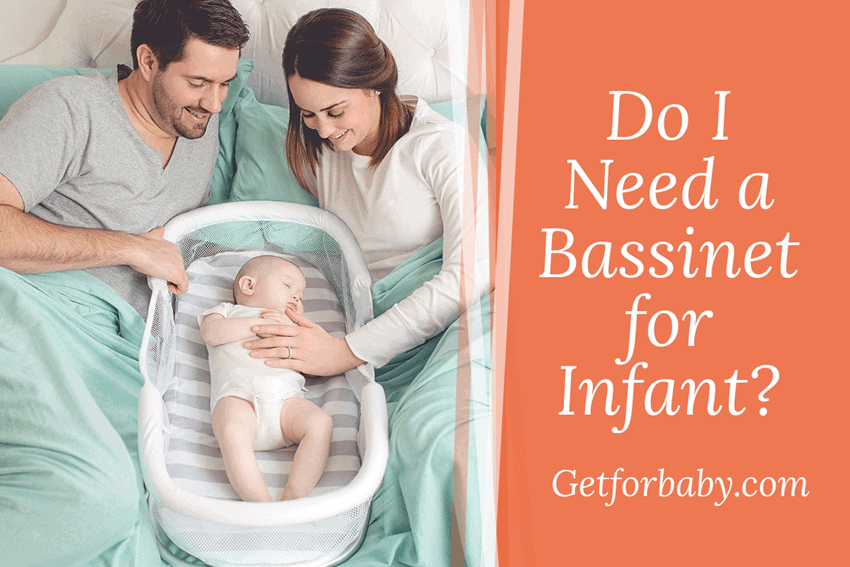

Thank you for all the advices. I think we’ll buy a bassinet just in case although I’d like to try bed-sharing. I have this “guides in a nutshell” by Susan Urban and one is about sleep training but with tips from the very beginning. What I really like about this book and your text as well is writing about family’s need and that there is no right answer!
Thanks a lot.
If you really like our article, then share it with others, who are in need.